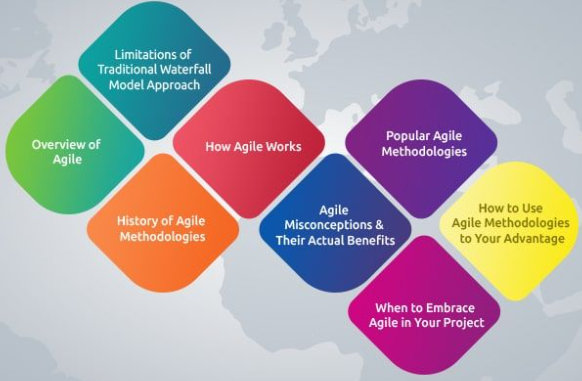
Introduction
Software engineering has evolved rapidly over the years, and Agile development has emerged as a game-changing approach. This comprehensive guide explores the pivotal role of Agile development in modern software engineering, providing insights into its principles, methodologies, and the transformative impact it has on software projects.
1. The Evolution of Software Development
We begin by tracing the evolution of software development, highlighting the challenges and limitations of traditional methodologies that paved the way for Agile approaches.
2. Understanding Agile Development
Agile is a flexible and iterative approach to software development. We will provide an in-depth understanding of the Agile methodology, explaining its core principles, values, and the Agile Manifesto.
3. Agile Frameworks and Methodologies
Agile development encompasses various frameworks and methodologies. We will explore popular Agile approaches such as Scrum, Kanban, and Extreme Programming (XP), highlighting their distinct characteristics and applications.
4. The Agile Team and Roles
An Agile team operates differently from traditional software development teams. We will delve into the roles and responsibilities within an Agile team, including the Scrum Master, Product Owner, and development team.
5. Agile Development Lifecycle
The Agile development lifecycle is iterative and incremental. We will explain how Agile projects progress through cycles of planning, execution, review, and adaptation, promoting flexibility and adaptability.
6. User Stories and Backlogs
User stories are a fundamental component of Agile development. We will discuss the role of user stories and product backlogs in capturing requirements and prioritizing work.
7. Continuous Integration and Continuous Delivery (CI/CD)
CI/CD is a core practice in Agile. We will explore how continuous integration and continuous delivery streamline the software development process, ensuring rapid and reliable software releases.
8. Agile Tools and Techniques
Agile development relies on various tools and techniques. We will introduce Agile project management tools, collaborative platforms, and development techniques that support Agile workflows.
9. Agile in Practice
Practical implementation is key. We will showcase real-world examples of Agile development, including how Agile is used in software projects, its benefits in terms of efficiency and quality, and its impact on team dynamics.
10. The Future of Agile Development
Agile development continues to evolve. We will discuss the future of Agile, exploring emerging trends and its role in shaping the software engineering landscape.
Conclusion
Agile development has become a cornerstone of modern software engineering, enabling teams to adapt to change, enhance collaboration, and deliver value to customers more efficiently. Whether you’re a software developer, project manager, or a stakeholder in software projects, understanding the principles and methodologies of Agile is crucial for embracing this transformative approach and staying at the forefront of software development practices. Agile’s flexible and customer-centric nature ensures that it will continue to play a pivotal role in the ever-evolving world of software engineering.